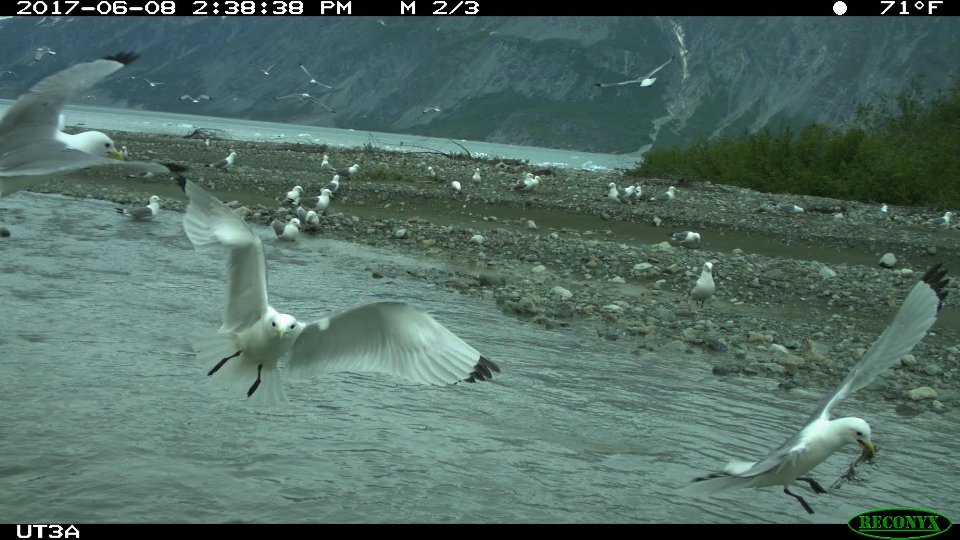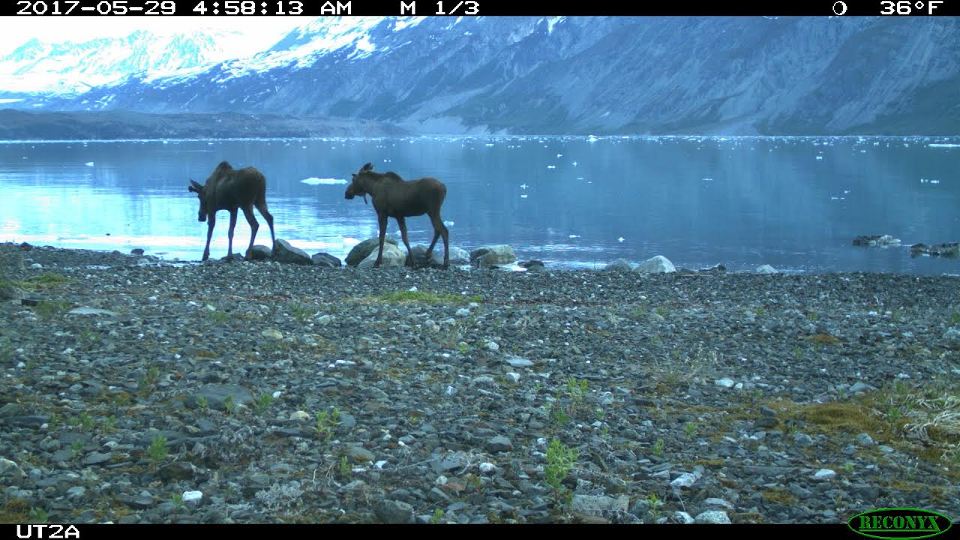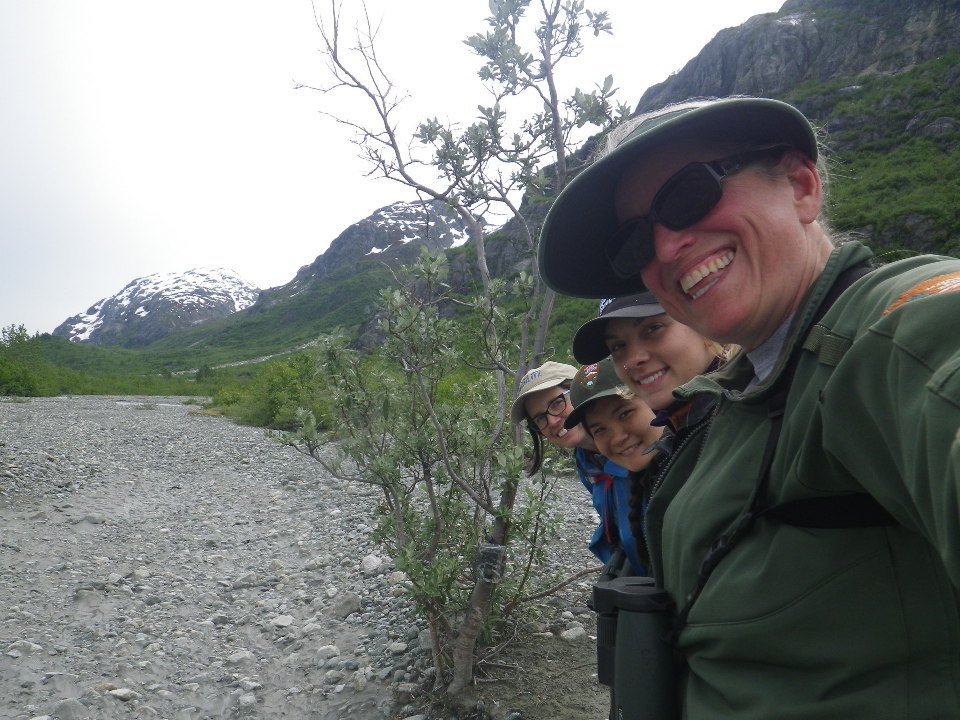New research Project in Glacier Bay:
Responses of Wildlife to Tourism and Landscape Change

A brown bear photographed by motion sensor camera at the mouth of Adams Inlet.
The number of visitors on the shoreline of Glacier Bay National Park has more than doubled over the past decade, largely due to off-vessel activities of tour vessels. The shoreline of Glacier Bay provides foraging habitat, corridors, as well as denning and nesting locations for many wildlife species. These areas also see the highest concentration of human use, so it has become increasingly important to understand how humans and wildlife coexist in the same space. Interactions with people can cause animals to alter their activity patterns and can even negatively affect their survival and reproduction. To understand the impacts that increased visitation has on wildlife, we have installed motion sensor cameras at 10 sites around the Bay to capture photos of wildlife to determine animals’ activity patterns when humans are present at a site compared to when humans are not present. Results from this project will assist managers in making yearly decisions concerning tour vessel shore excursions, kayak drop-offs, and other human shoreline use to minimize human disturbance to wildlife. Results will also contribute to upcoming backcountry and wilderness planning efforts.

Black-legged Kittiwakes photographed by motion sensor camera in Tarr Inlet.
As many of the glaciers of Glacier Bay continue to recede, new habitat opens up for wildlife to colonize and inhabit. To understand patterns in post-glacial animal colonization we will supplement the photo data from the cameras with small mammal trapping and bird surveys to learn which species are currently inhabiting which areas of the park. This portion of the study will contribute to the growing body of literature on Glacier Bay’s post-glacier succession, a key component of the park’s mission.

Two young bull moose photographed by motion sensor camera in Tarr Inlet.
Motion sensor cameras were chosen for this study because of their ability to capture information on species presence and activity without changing the behavior of the animals themselves. Other wildlife research techniques considered for this project have substantial drawbacks. For example, radio collaring animals only provides information on select individuals and capturing wildlife can be dangerous for the animals. Direct observations of wildlife also has drawbacks, as this method requires large numbers of staff hours in the backcountry, the sight and sounds of human observers may influence animal behavior, and the presence of staff conducting research may impact visitors’ wilderness experience. Cameras have little to no effect on the activity of wildlife and are especially useful in detecting secretive and/or nocturnal species. However, cameras in the wilderness may impact visitors’ wilderness experience. We hope that the benefits of this two year project will outweigh the drawbacks by providing essential information with which to protect wildlife in the future.

From left: Laura Prugh (UW), Kiana Young (NPS), Mira Sytsma (UW) and Tania Lewis (NPS) pose by a recently installed motion sensor camera (on lower trunk of willow tree) in Tarr Inlet.
This project is a collaboration between the National Park Service (NPS) at Glacier Bay National Park and Preserve and University of Washington (UW). For more information on this project contact: Mira Sytsma at mira22@uw.edu or 971-275-7048 and Tania Lewis at e-mail us or 907-697-2668.
